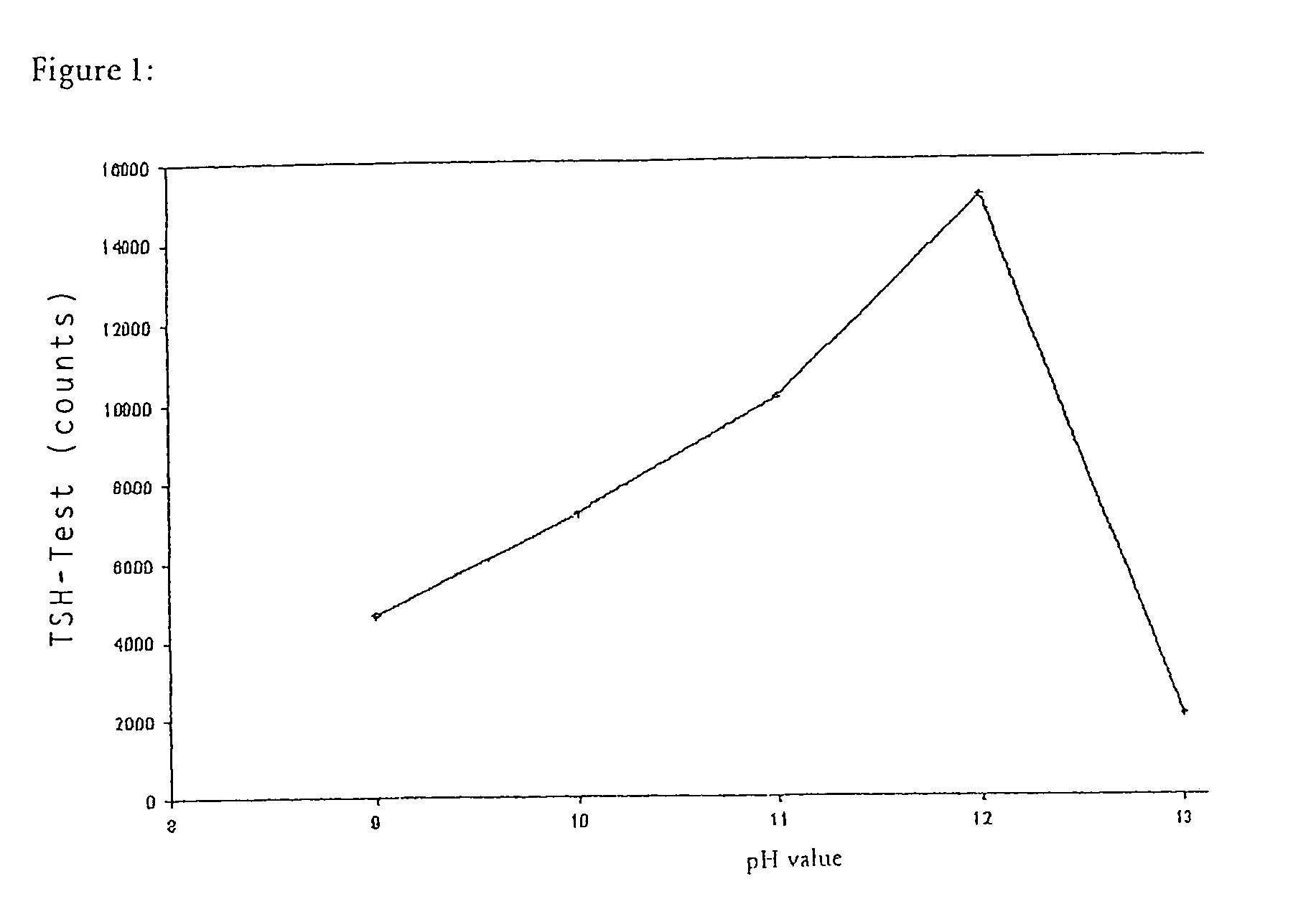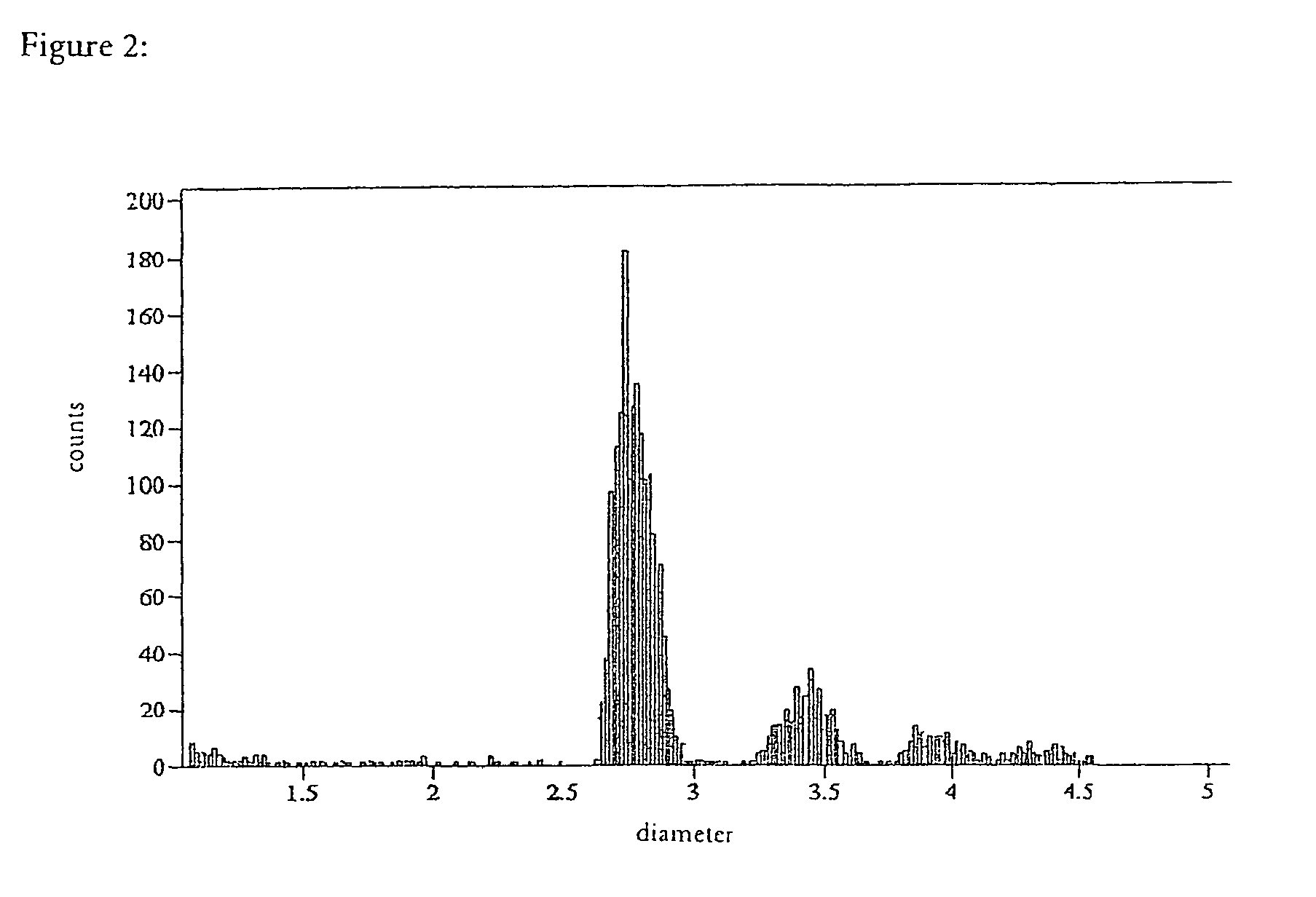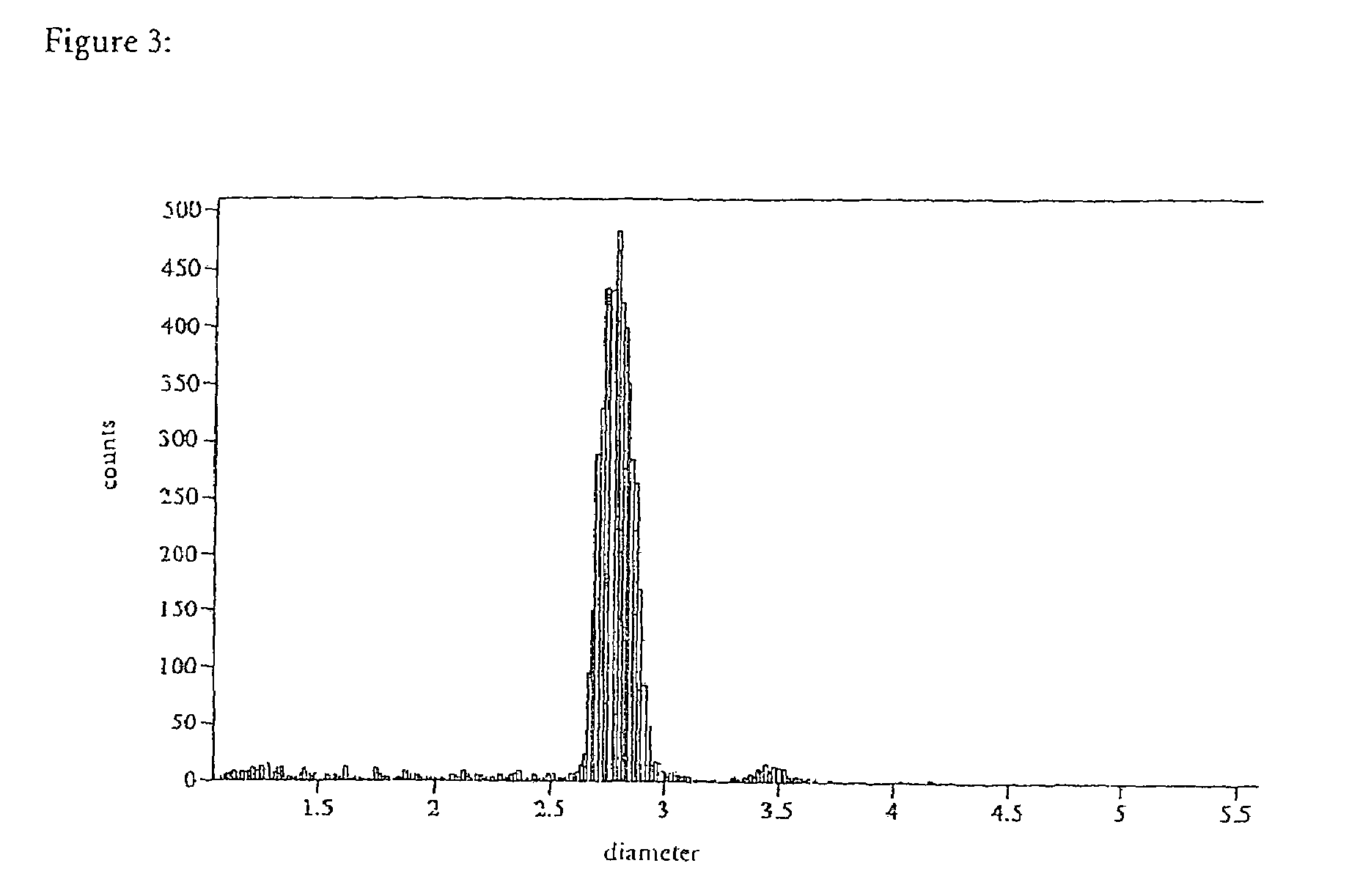Method for producing microparticles loaded with proteins
a technology of proteins and microparticles, applied in the field of protein-loaded microparticles, can solve the problems of low loading densities and/or very variables, poor spatial accessibility of functional groups, and high degree of lot to lot variability, and achieve low bleeding, good storage stability, and high binding capacity
- Summary
- Abstract
- Description
- Claims
- Application Information
AI Technical Summary
Benefits of technology
Problems solved by technology
Method used
Image
Examples
specific embodiments
Example 1
Bead Coating
1.1 Reference Beads
[0048]DYNAL M-280 beads were coated as described in DE 19924643.
1.2 Alkaline Coating (pH Optimization)
[0049]50 mg magnetic beads (DYNAL M-270 or DYNAL M-280) were washed successively, first with isopropanol, then several times with 5 ml portions of 50 mM Na phosphate buffer (pH 9.0). Subsequently the beads were resuspended in 4 ml 50 mM Na phosphate buffer (pH 9.0). Afterwards 10 mg polymerized streptavidin (poly-SA) dissolved in 1 ml 50 mM Na phosphate buffer pH 6.3 was added. The pH was then adjusted to the desired value between pH 10.0 and pH 12.5 with NaOH. The preparation was incubated for 72 hours on a roller mixer. Subsequently the beads were washed alternately with 40 mM Na phosphate buffer (pH 7.4) and 1 percent TWEEN 20 (ICI Americas Inc.) solution (in the same basic buffer). The beads were subsequently incubated and washed several times with a solution consisting of sodium phosphate buffer (10 mM Na phosphate 0.15 M NaCl, pH 7.4) an...
example 2
Particle Distribution
[0051]The DYNAL M-280 and M-270 beads coated by the method described above were compared with M-280 beads coated by a conventional method using a particle counter (Coulter Multisizer II, FIGS. 2-4). In the case of the alkaline coating the result was a considerably more homogeneous distribution of the coated beads with substantially lower proportions of dimeric, trimeric, and higher aggregates. This is shown by comparing FIGS. 3 and 4 with FIG. 2.
example 3
Bleeding Properties
[0052]The bleeding of coated proteins occurs very slowly under normal storage conditions (4-8° C.) over many months. In order to simulate bleeding under storage conditions, a short-term model was used. For this the coated particles were stored for 21 days at 35° C. on a roller mixer. The biotin binding capacity of the supernatant which is due to streptavidin that has bled off is determined, for example, using radioactively labelled biotin.
[0053]The bleeding tendency is stated in ng as SA / mg particles. In order to determine the bleeding, a standard curve is established using monomeric streptavidin, and the biotin binding capacity of the supernatant of stressed microparticle suspensions is read off from this curve. In the case of the microparticles coated according to Example 1, the bleeding tendencies were surprisingly low and were regularly below 150 ng / mg, and in most cases even less than 100 ng / mg after stress.
PUM
| Property | Measurement | Unit |
|---|---|---|
| size | aaaaa | aaaaa |
| size | aaaaa | aaaaa |
| pH | aaaaa | aaaaa |
Abstract
Description
Claims
Application Information
 Login to View More
Login to View More - R&D
- Intellectual Property
- Life Sciences
- Materials
- Tech Scout
- Unparalleled Data Quality
- Higher Quality Content
- 60% Fewer Hallucinations
Browse by: Latest US Patents, China's latest patents, Technical Efficacy Thesaurus, Application Domain, Technology Topic, Popular Technical Reports.
© 2025 PatSnap. All rights reserved.Legal|Privacy policy|Modern Slavery Act Transparency Statement|Sitemap|About US| Contact US: help@patsnap.com



